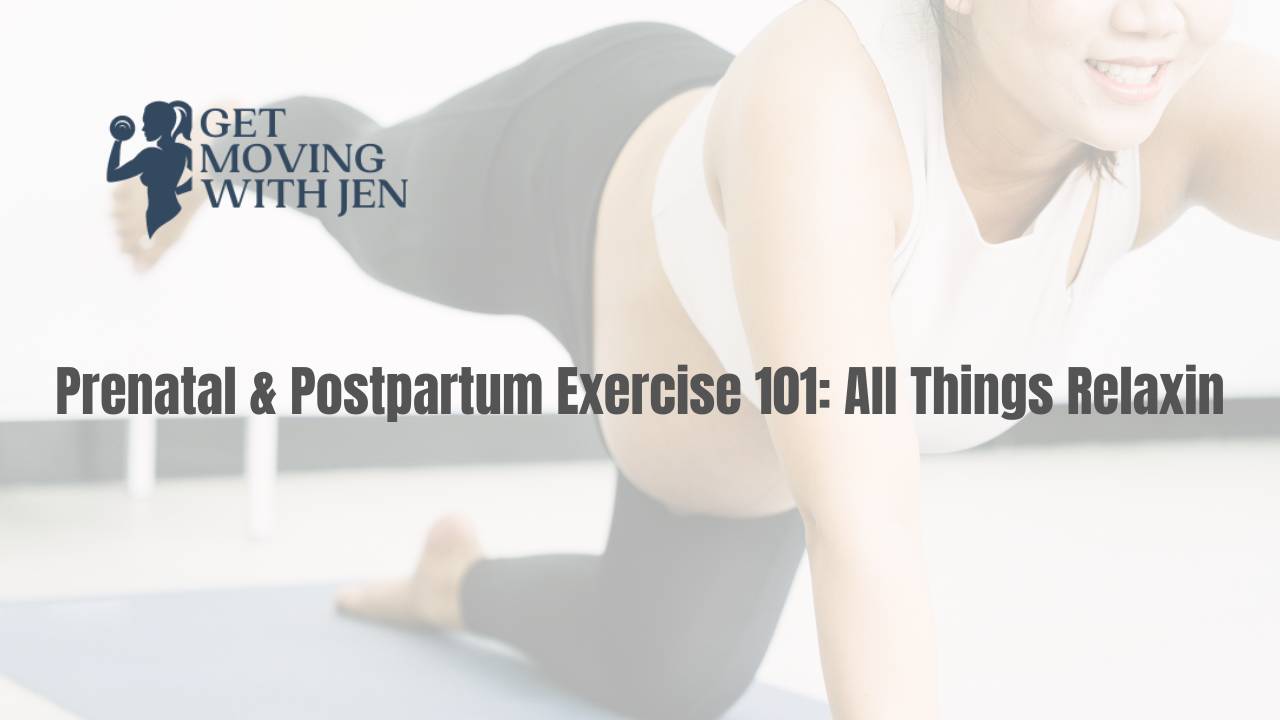Prenatal & Postpartum Exercise 101: All Things Relaxin

Pregnancy and postpartum recovery are beautiful yet challenging times for the body, and understanding the role of relaxin—a hormone that significantly affects joints and ligaments—can help moms navigate movement safely and effectively. Whether you're pregnant or recently had a baby, being informed about relaxin’s effects on your body will empower you to exercise with confidence while minimizing discomfort or injury.
What is Relaxin?
Relaxin is a hormone that prepares your body for pregnancy and childbirth. Its primary job is to loosen joints and ligaments, especially in the pelvic region, to allow for a growing baby and a smoother labor process. However, relaxin doesn’t just affect the pelvis—it impacts ligaments all over the body, which can lead to increased flexibility but also instability and discomfort.

How Relaxin Fluctuates During Pregnancy and Postpartum
Relaxin begins to rise early in pregnancy, starting around ovulation and increasing through the first trimester. By the end of the first trimester, levels stabilize, but toward the end of pregnancy, they surge again to prepare the body for labor and delivery.
Even after birth, relaxin levels remain elevated for up to 6–12 months postpartum. This means that postpartum moms may still experience joint laxity and instability, which can affect their return to exercise and daily activities.
How Does Relaxin Impact Exercise?
Since relaxin increases joint flexibility, it can lead to joint instability, making pregnant and postpartum women more prone to aches, pains, and even injuries. Many moms find that movements they could do before pregnancy suddenly feel different or unstable due to the hormone’s effect on their ligaments.
For postpartum moms eager to return to exercise, jumping back into pre-pregnancy routines without proper stabilization work can lead to issues like hip, knee, or lower back pain.
How to Exercise Safely with Relaxin in Mind
While you can and should move your body during pregnancy and postpartum, the key is focusing on stability and strength to counteract the joint laxity caused by relaxin.
One of the best approaches is to incorporate isometric exercises into your prenatal and postpartum workout routine.
Why Isometrics?
- Strengthens tendons – This helps compensate for loosened ligaments.
- Improves joint stability – More stability means smoother, safer movements.
- Reduces injury risk – Protects your joints from excessive movement, keeping you active longer.
Examples of Safe Exercises You Can Do
- Wall sits – Builds lower body strength while reinforcing pelvic stability.
- Glute bridges – Strengthens the posterior chain, including glutes, hamstrings, and core.
- Clam Shells – Helps with hip stability, reducing strain on the pelvis.
- Bear Planks – Strengthens deep core muscles for better overall stability.

Putting It All Together
Relaxin is a normal and essential hormone that supports the female body through all of its changes. However, understanding how it affects your body can help you make better exercise choices, reduce pain, and minimize injury.
By focusing on stabilizing your joints and strengthening tendons, you’ll be able to move safely, stay consistent with workouts, and feel stronger throughout pregnancy and postpartum.
Want more tips on prenatal and postpartum fitness? Follow @getmovingwithjen for expert guidance, safe exercises, and supportive resources tailored for moms like you!
References
- American College of Obstetricians and Gynecologists (ACOG). "Physical Activity and Exercise During Pregnancy and the Postpartum Period." ACOG.org
- Mayo Clinic. "Postpartum Exercise: How to Safely Rebuild Strength." MayoClinic.org
- National Institute of Health (NIH). "The Role of Relaxin in Pregnancy and Postpartum Recovery." NIH.gov
- Cleveland Clinic. "Hormonal Changes in Pregnancy: Effects on Ligaments and Joints." ClevelandClinic.org
- Harvard Health Publishing. "The Importance of Core Stability in Postpartum Recovery." Harvard.edu
- Parker EA, Meyer AM, Goetz JE, Willey MC, & Westermann RW. "Do Relaxin Levels Impact Hip Injury Incidence in Women? A Scoping Review." Frontiers in Endocrinology, vol. 13, 2022. Frontiers in Endocrinology

